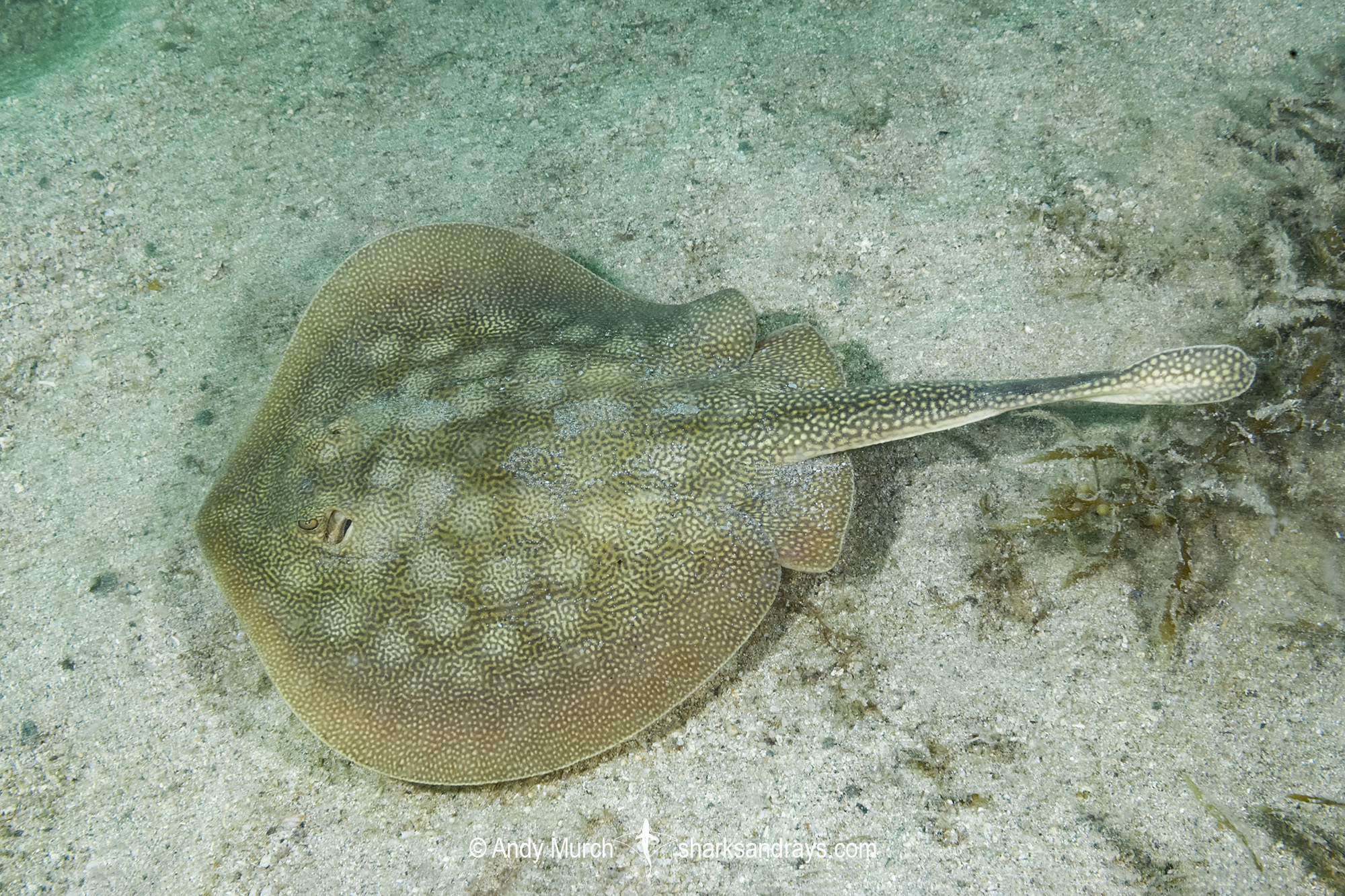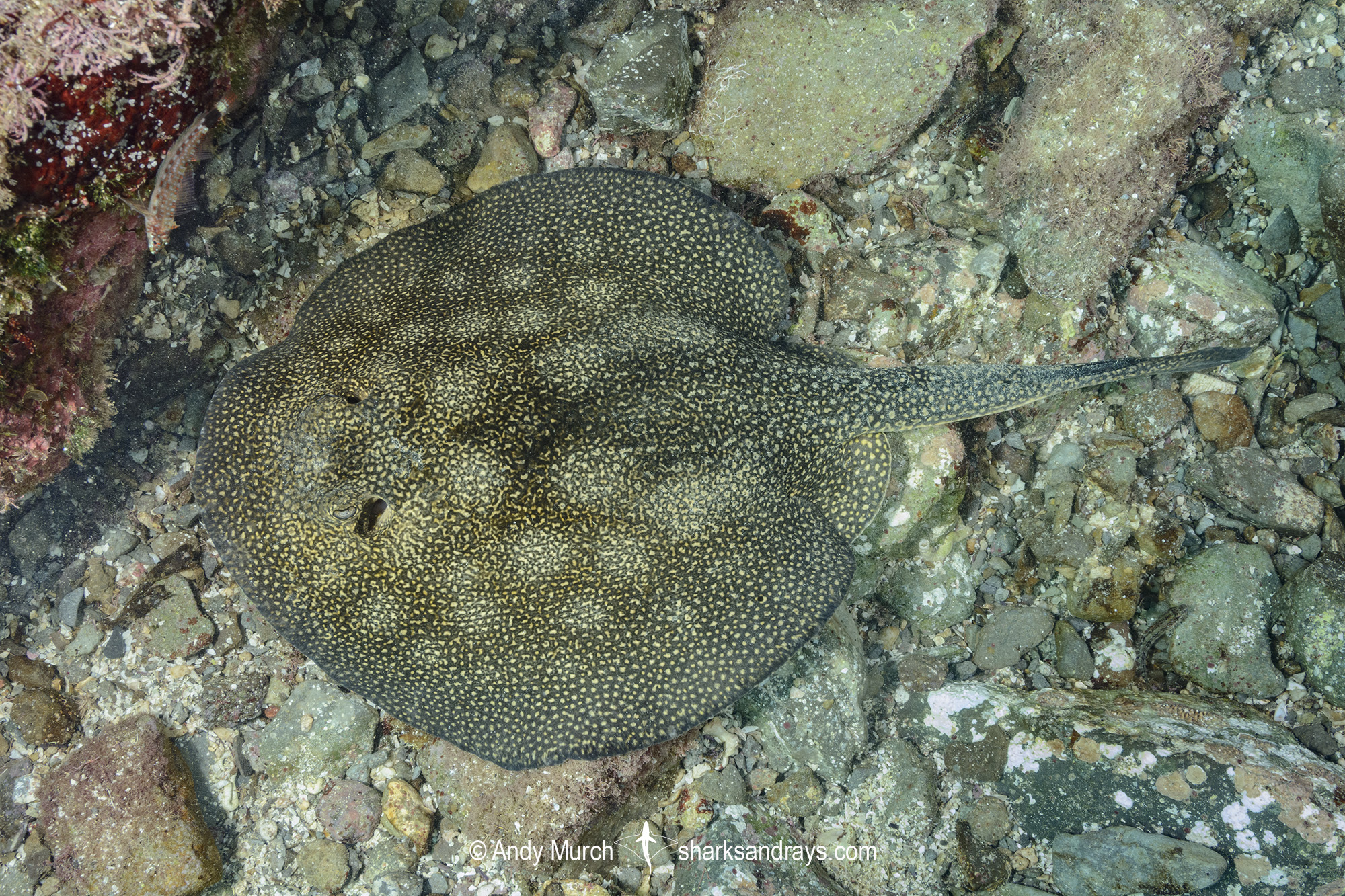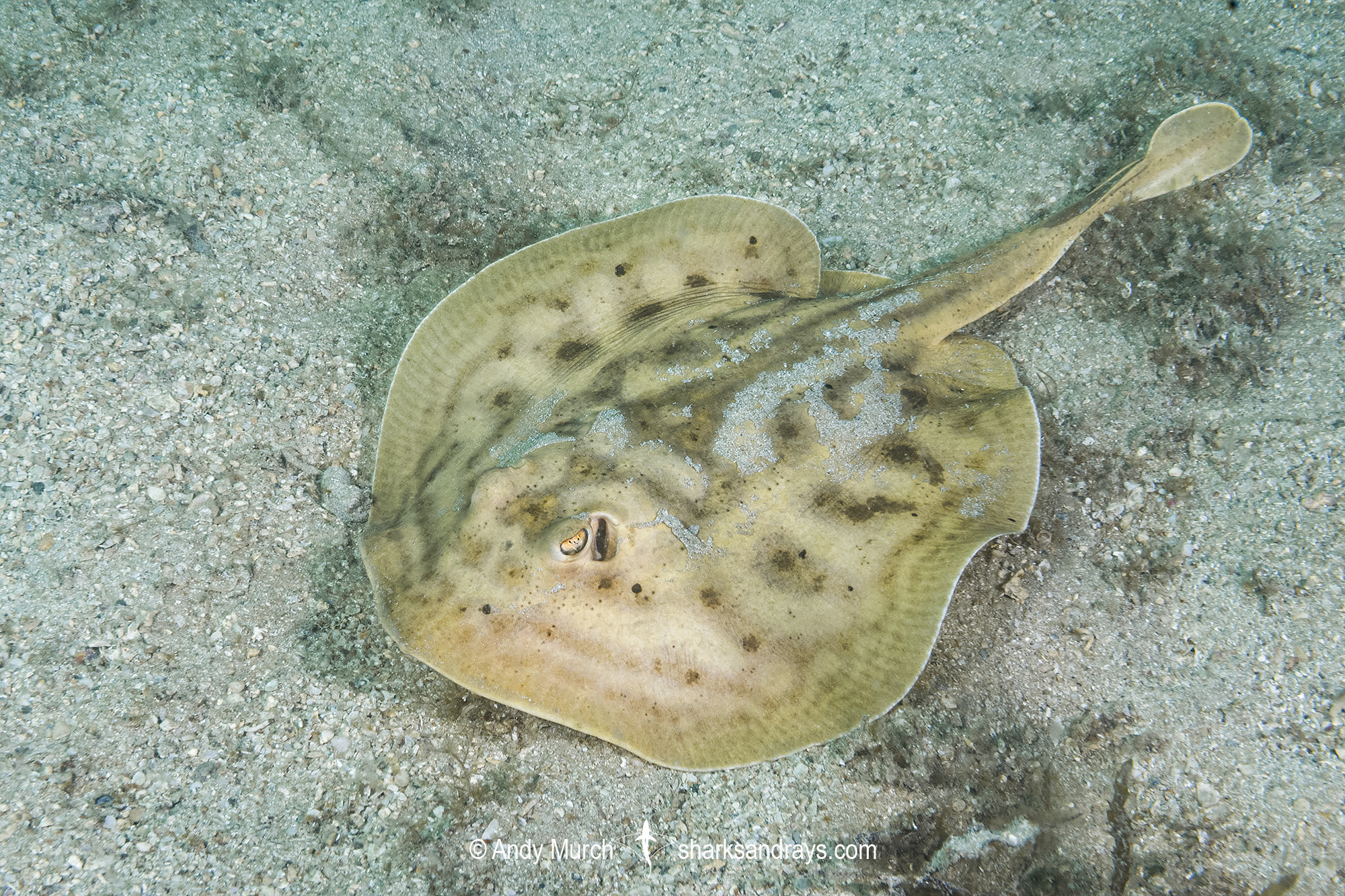Common name(s)
Haller’s Round Stingray, Round Stingray.
Identification
A medium to large sized round stingray with a sub-circular disc that is approximately equal in width and length. Snout obtusely angular. Anterior margins of disc almost straight towards snout tip, apices broadly rounded. Disc completely smooth. Pelvic fins broadly triangular with rounded posterior margins, lengths greatly exceeding width.
Eyes small; orbit length 0.28-0.37 x snout length. Mouth weakly arched. Nasal curtain skirt-shaped. Nostrils slit-like.
Tail short and broad based, with lateral skin folds that are most prominent anterior to caudal sting. Tail length 49-52% of total length. Caudal sting short, length equal to or slightly shorter than caudal fin. Caudal fin relatively short and high, with a high upper lobe and a rounded, blunt, or slightly indented posterior margin.
Colour
Dorsal coloration highly variable; yellowish, beige, dark brown, or occasionally solid black, but usually fairly light with a dense covering of small dark, light, or yellowish spots, or variegations. Small spots generally grouped into large clusters separated by a darker honeycomb pattern that may also be filled with spots. Ventrum pale or beige, often with a darker margins that may have similar patterning to dorsum.
Size
Total length 55cm. Length at birth 6-8cm.
Habitat
Warm temperate / tropical seas. Found in shallow sandy bays, on reef rubble, around seagrass beds, and on rocky reefs. Usually shallower than 15m but recorded down to 91m.
Distribution
Eastern Pacific. Haller’s round stingray is found from Humboldt Bay in northern California to Panama in Central America, but it is most common between southern California and Baja California. Records of this species in Central America may be misidentifications of the recently described leopard round stingray Urobatis pardalis.
Conservation Status
LEAST CONCERN
Haller’s round stingray is not targeted commercially, but is taken incidentally by commercial shrimp trawl fisheries, recreational fishers, and artisanal gillnet fisheries. This species is generally discarded, but before being returned to sea, the tail is commonly severed, which may lead to increased levels of bycatch mortality. In Mexico, artisanal or commercial fisheries do not typically utilize urobatid rays as their small size generally precludes their sale as a food item for market purposes (Cartamil et al. 2011).
Citation
Lyons, K., Ebert, D.A. & Lowe, C.G. 2015. Urobatis halleri. The IUCN Red List of Threatened Species 2015: e.T60108A80677446. https://dx.doi.org/10.2305/IUCN.UK.2015-4.RLTS.T60108A80677446.en. Downloaded on 30 March 2021.
Reproduction
Aplacental viviparous. 2 litters of 6 pups yearly.
Diet
Probably small benthic invertebrates.
Behavior
At the Midriff Islands in the haller’s round stingrays someetimes rest on top of rocky pinnacle reefs, presumably to remain above the thermocline in warmer water.
Reaction to divers
Generally skittish. Likely to move away once discovered but sometimes initially tolerant if approached carefully.
Diving logistics
Haller’s round stingray is extremely common in shallow bays in the southern Sea of Cortez. You’re likely to see multiple animals on virtually dive in the area but they are just as abundant when snorkeling off of most beaches; so much so that beachgoers have to emply the ‘stingray shuffle’ in order to avoid stepping on them.
At the beach by the lighthouse in the town of Mulegé, I estimate there were hundreds present from one end of the short beach to the other. As I snorkelled parallel to shore, scores would bolt from the sand and swim away in all directions. I also saw a particularly dark, presumably old male grab a female from her resting spot and hold on with his mouth while she frantically tried to escape his grasp.
Playa El Burro and other beaches south of Loretto are also excellent spots to encounter numerous haller’s round stingrays.
What’s new
View our full list of updates
Similar species
Leopard Round Stingray An extremely similar species from Costa Rica. Spots on dorsum often slightly larger and/or elongated.
Spotted/Cortez Round Stingray Distinguished by subtle or absent concentric rings, eye-sized dark spots, and small brown flecks.


















